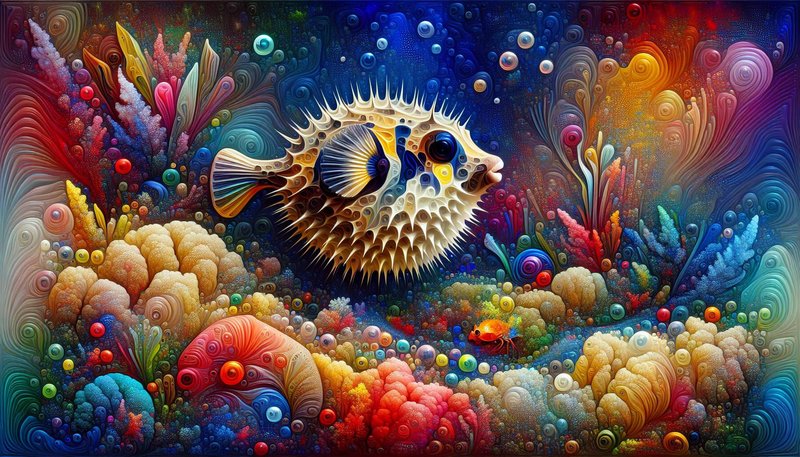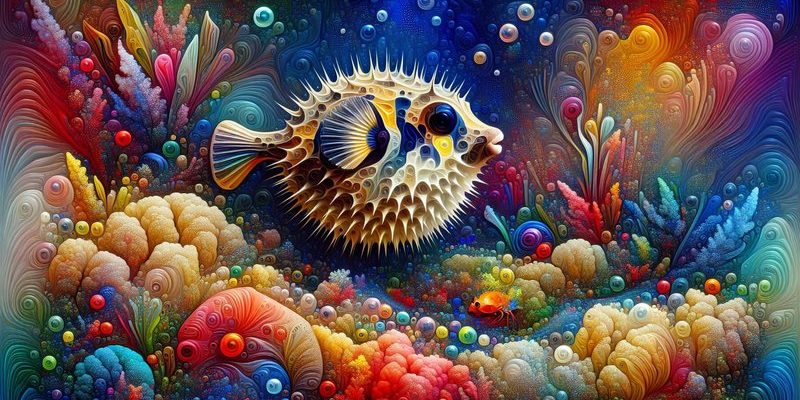
Let’s dive into the dietary world of the pufferfish, exploring what makes their eating habits so special. Whether you’re just curious or considering having one as a pet, understanding their diet is key. After all, a healthy pufferfish is a happy pufferfish, and knowing what to feed them will help them thrive in any environment.
Understanding Pufferfish Diet: What Do They Eat?
Pufferfish are omnivores, which means they enjoy a mix of both plant and animal-based foods. This can range from algae and seaweed to small crustaceans and mollusks. Imagine a chef with a well-balanced menu—pufferfish thrive on variety. In the wild, their diet is quite extensive, allowing them to forage for a range of delicious snacks that keep them healthy and satisfied.
You might wonder about their favorite dishes. Pufferfish particularly enjoy foods like:
- Algae
- Crabs
- Snails
- Small fish
In many ways, their feeding habits are dictated by their surroundings. A pufferfish living in a coral reef might munch on different items compared to one residing in sandy waters. This adaptability is key to their survival and vitality.
The Role of Beak-like Teeth in Feeding
One striking feature of pufferfish is their beak-like teeth, which play a critical role in their feeding process. These teeth are not just for show; they help the fish crack open hard-shelled prey like snails and crabs. It’s a little like having a built-in nutcracker—you can imagine how handy that would be at a dinner party!
These teeth grow continuously, so pufferfish need to regularly gnaw on hard foods to keep them worn down. If they don’t, these teeth can become overgrown and lead to trouble, making it hard for them to eat. So, if you ever find yourself in a conversation about pufferfish, you can share this fun tidbit!
Feeding Habits in the Wild vs. Captivity
In the wild, pufferfish have the freedom to roam around and find their favorite snacks. They spend a lot of time foraging, which keeps them active and healthy. But what happens when pufferfish are kept in captivity, say in an aquarium? That’s where things can get a bit tricky.
In captivity, it’s vital to replicate their natural diet as closely as possible. This often means providing a mix of high-quality pellets, fresh vegetables, and occasional live food. An imbalanced diet can lead to health issues, like bloating or malnutrition. So, if you’re thinking about keeping a pufferfish at home, be prepared to put some thought into their meals.
For example, a balanced diet for a pet pufferfish might include:
- High-quality pellets specifically designed for pufferfish
- Frozen or live food, like brine shrimp or bloodworms
- Vegetables, such as peas or spinach, that are blanched for easier eating
How Often Should You Feed a Pufferfish?
When it comes to feeding a pufferfish, timing is just as important as what you feed them. Generally, a good rule of thumb is to feed them once or twice a day. But here’s the thing: pufferfish can be a bit overzealous during mealtime. They often puff up not just for defense but also when they’re feeling particularly greedy!
Overfeeding can lead to health problems, including obesity and digestive issues. So, keep an eye on their portion sizes. A good approach is to offer only what they can eat in about 5-10 minutes. If there are leftovers after that time, it’s a sign you’ve given too much. It’s a delicate balance, but it’s essential for their health.
Common Dietary Issues to Watch Out For
While pufferfish are hardy creatures, they can still face dietary challenges. One of the more common issues is bloating, especially if they eat too quickly or consume too much food. This can be concerning, and keeping an eye on their eating habits can help catch any problems early on.
Another concern is malnutrition. Without a varied diet, pufferfish might miss out on essential nutrients. If they seem lethargic or are losing weight, it might be time to reassess what you’re offering them. A colorful plate not only looks good, but it also fuels a healthy fish.
Additionally, pufferfish are known to produce toxins, particularly when stressed. A poor diet or unhealthy living environment can heighten this toxicity, posing risks to both the fish and any other tank mates. So, ensuring a balanced and stress-free environment is key to your pufferfish’s health.
In conclusion, the diet and feeding habits of pufferfish are fascinating and vital to their health and happiness. Whether in the wild or in an aquarium, these quirky fish thrive on a balanced diet that combines both plant and animal foods. Understanding their unique needs allows them to flourish, showcasing their vibrant personalities and playful behavior.
So, if you’re venturing into the world of pufferfish, remember—variety is the spice of life! With careful attention to their diet and feeding habits, you can ensure a long, healthy life for your spiky friend. Happy feeding!

